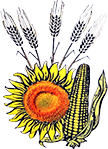Biodiversity in Organic Agriculture - the First Strategy of the European Green Deal
Ion Toncea
National Agricultural Research and Development Institute Fundulea
Keywords: biodiversity, ecological agriculture, Green Deal strategy.
Abstract: Biodiversity, a term first used instead of the expression “biological diversity” at the National Forum of BioDiversity in Washington in 1986, is defined and understood as the variability of different life forms - plants, animals, microorganisms, genes, etc. and the interactions between them and their living environment (Emilia Cristea, 2005). Biodiversity is also invaluable to present and future generations because biological resources are paramount to the economic and social development of humanity and, at the same time, it is a universal asset for reducing human pressure on species and ecosystems.
In organic farming, biodiversity is, along with the land, the most valuable factor of production and, at the same time, an essential technological element that deservedly it is imposed in the European Green Deal as the first strategy for designing the European Action Plan for the Ecological Agriculture Development. In this context, the Action Plan for the Development of Organic Agriculture in Romania must be based on Biodiversity and may contain 6 (six) actions: 8-10% of Romania's agricultural area in the ecological system; more (by 10-20%) operators in organic farming by accelerating conversion of agro-ecological living laboratories (ALLs) to organic farming; doubling incomes in organic farming; 20% of ecologically certified products in public canteens (school and social); use of organic seeds and planting materials on 90% of organically cultivated land, as well as organic breeding animals and more research in organic farming.
